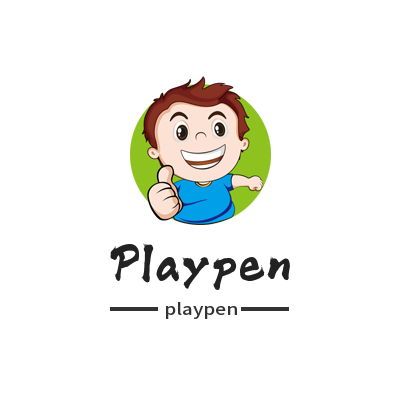Playpens can provide some learning experiences, although they may be relatively limited. Here are some of the learning experiences a playpen can provide:
Exploration and Discovery: Encourage children to explore and discover by placing age-appropriate toys in the playpen. Through activities such as touching, playing with, and inserting, children can explore the characteristics, shapes, colors, and textures of objects and develop their observation and perception abilities.
Hand-eye coordination and fine motor skills: Toys in the playpen can help children develop hand-eye coordination and fine motor skills through activities such as grasping, placing, and puzzles. This activity can exercise children's hand muscle control and improve their fine motor skills and finger flexibility.
Language and communication: Musical toys, language enlightenment toys, etc. in children's playpens can promote children's language and communication development. Children can learn and imitate speech, sounds and expressions, expanding their vocabulary and language understanding by interacting with toys.
Social Skills: If other children are nearby, a playpen can provide an interactive space for children to interact socially with their peers. This interaction helps children learn social skills such as cooperation, sharing, mutual aid and communication.
Imagination and creativity: Providing stimulating toys in the playpen, such as role-play props, building blocks, etc., can stimulate children's imagination and creativity. They can create storylines, characters and scenes through toys, developing their creativity and expression skills.
However, it is important to note that learning experiences in playpens are often limited as they provide relatively little space and resources. To promote the all-round development of children, other learning opportunities and activities should also be integrated with the use of playpens. Activities such as interaction with parents and carers, outdoor exploration, reading and visits all provide a wider learning experience to help children develop in all aspects.
Here is some additional information to help you learn more when it comes to playpen learning experiences:
Diverse Toy Selection: In order to provide a rich learning experience, various types of toys can be provided in the children's playpen, covering different areas and skills. For example, puzzles, building blocks, graffiti boards, musical toys, shape sorting toys, etc. Such diversity can stimulate children's interests and promote their cognitive, motor, language and emotional development.
Parent-child interaction: The learning experience of the playpen can be combined with the active participation of parents or caregivers. Parents can play, explore and learn with children, interacting with them and providing guidance. This kind of parent-child interaction can strengthen the emotional connection with the child and promote language development, social skills and problem-solving skills.
Safety Considerations: Safety is paramount when providing a playpen learning experience. Make sure playpens and toys are designed for the child's age and stage of development and avoid sharp edges, small parts or breakable parts. Also, regularly check the condition of playpens and toys to make sure they haven't become damaged or become unsafe.
Create an adaptive environment: Children's playpens should be placed in a quiet, clean and safe environment, away from dangerous items and hazardous areas. At the same time, ensure that the environment around the playpen has a positive impact on children's learning and development, providing some elements of visual stimulation and curiosity, such as pictures, books or works of art.
Flexibility and variety: To keep learning fresh and interesting, toys and arrangements in the playpen can be changed regularly. In this way, children can face new challenges and stimulation, stimulating their curiosity and desire to explore. At the same time, the difficulty level and type of toys can be adjusted according to children's interests and development needs.
Most importantly, the learning experience in a playpen should be enjoyable and positive. By interacting with and observing children, parents and caregivers can understand their interests and needs, provide them with appropriate learning experiences, and provide support and guidance as they grow.

